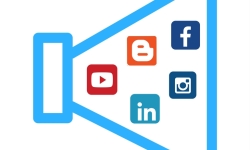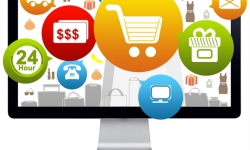Six Proven Ways to Drive Traffic to Your Online Store
Every business owner has that big dream of earning millions from their online store. Why not? It’s not necessarily difficult to build an online store, is it? Sadly, though, the age-old adage “if you build it, they will come” may not apply to the world of eCommerce. Building an online store is just half the battle; the real work involves letting the world know about your store. And more importantly, make sure that you have a consistent stream of visitors—or in other words, a consistent stream of sales.
Increasing traffic to your online store can be a daunting task. Most of the time, the amount of traffic doesn’t matter as much as quality. What are a million visitors if they don’t lead to any sales?
Here are 6 strategies you can try to build traffic to your website.
1. Produce more content
Yes, you have written product descriptions for your online store. But these aren’t enough. The key to creating good content is to write articles relating to what you sell. Start a blog in your online store and write about the benefits of your product or other interesting subjects. In doing so, people will perceive you as an authority in your niche. As an authority, customers will trust you more and purchase from your store more often.
2. Leverage SEO
You already know about the wonders of search engine optimization. Now it’s time to really put it into action. Getting good rankings doesn’t happen overnight, though. SEO is a long-term play. The key to championing SEO is to pick good long-tail keywords. These are keywords that are three to four phrases long and are specific to your product (i.e., wedding cake designer in Toronto). Supplement these keywords with decent content to increase the keyword volume.
3. Tap Instagram Influencers
Instagram is quickly becoming a springboard to a whole new generation of Internet superstars and trendsetters. And they are building their audience fast. One of the best ways to take advantage of this platform is to become a trendsetter yourself and launch your brand in Instagram together with visually appealing photos.
But for some online stores, it’s easier to just get in touch with others who have already built a following and have become influencers. Start by browsing Instagram for influencers and power users who can feature your product to their followers. A tool called Website lists the trending Instagram hashtags and users. Browse for hashtags related to your market and target users who have a huge following.
4. Email Marketing
Social media may be all the rage. But email marketing still proves to be one of the most effective marketing tools there is, especially when you are reaching out to a specific market niche. There are online store solutions that also offer an email messaging capability (i.e. MailChimp), which you can use to tap new customers, existing customers, or even those who have abandoned their shopping carts. Use your email to increase your mailing list, send out newsletters, blogs and discount coupons.
5. Engage on Twitter
Among popular social media platforms, Twitter may be the most challenging to use. Two reasons: the limited space and the difficulty of getting followers. But it’s all just about following a well-defined Tweeting strategy. Here are some tips to drive traffic:
- Make your posts timely
- Only share useful information
- Make your images attractive
- Add some “personality” into your 140-character post
- Be consistent in using your hashtags
6. Join forums
It’s not enough to just visit forums and drop links to your online store. If you do this, you’ll only get banned. Forums consist of groups and communities who actively engage with each other. Your posts should focus on steering forum members to your content pages (i.e. blogs, product descriptions), with the intention of helping them find what they are looking for. This will earn you establish a good reputation in the community and eventually flock your online store.
You only launch your online store once, so go ahead and make it count. Reach out to as many people as you can, drive traffic and convert them into customers.







